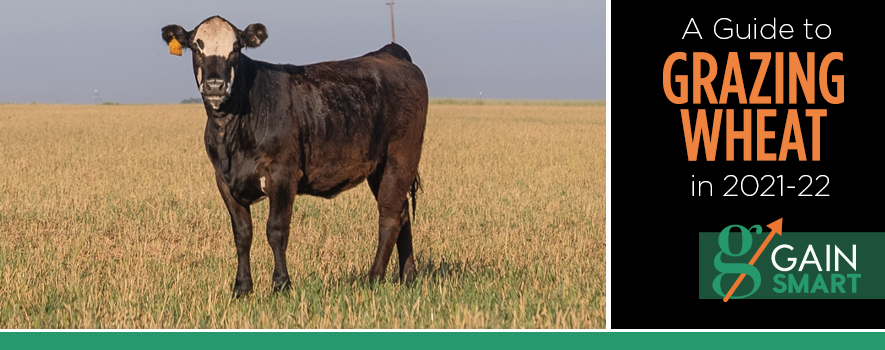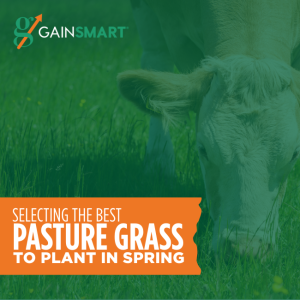
Stockers and backgrounders typically rely on the high-quality nutrients found in wheat pasture to turn their calves out on for late fall and winter grazing. Wheat pasture is an economical source of gain throughout the Southern Plains and Midwest. However, there hasn’t been much typical about this year’s weather patterns.
Due to an early onset of fall army worms, which can decimate a wheat crop, keeping farmers from planting early, and a late summer drought, planting has been significantly pushed back through much of the Wheat Belt this year. Late planting conditions mean later turnouts and potentially fewer days of grazing.
“This year, lots of areas were delayed to the last week in September when we finally got good rains across Oklahoma,” said Paul Beck, Ph.D., Oklahoma State University Extension Beef Nutrition Specialist.
What is Typical?
Beck said that in a “normal” year, graze-out wheat is generally planted at the end of August into the first of September to give the calves the best opportunity for early fall grazing and maximize fall yields. Dual-purpose wheat is usually planted from mid-September through September 25, while grain-only wheat is planted into October.
“Most wheat in Oklahoma was delayed at least to the tail end of the last window for ideal forage production. Every day we delay planting from most normal years from first of September to the middle of September we’ll decrease our fall forage yield potential by 35 to 40 pounds. If we have producers interested in grazing only, we have substantial reduction for potential for fall grazing. By getting delayed from the first of September into early October, that could be about 60 pounds of fall forage lost for each day planting is delayed, so lots of potential pitfalls in terms of delayed planting, due to the dry conditions,” Beck said.
Typically, he recommends that calves are on wheat pasture for at least 60 to 80 days to achieve maximum performance.
What about this year?
With delays in planting, that means delays in turnout. However, calves should still be able to be on the wheat for at least 60 days. Beck said the growing weather and wheat maturity greatly impact when the calves must come off the wheat, regardless of when they are turned out.
He said that when turned out, calves will usually lose some weight the first few weeks on wheat, as they will with any change in diet. Then, it takes an additional two weeks to gain that initial weight lost back. There is 30 days just getting them adjusted. An additional 30 days is required to get them some good gain, which should be achievable, if the calves can get out to graze before the end of the calendar year.
“If we continue to get some rains and some quality growing weather, we are looking at possibly delaying grazing turnout until mid-November instead of early November or maybe the first of December if things continue to pan out the way it looks,” Beck said. “Wheat pasture is high in moisture, high in protein and high in soluble carbohydrates so there is a lot of ruminal adaptation that has to happen before they start performing. It’s made up if they can be out there for at least 60 days. In an extremely short grazing period, you will see low performance on high-quality forage.”
Beck recommends pulling cattle from wheat pasture at the signs of first hollow stem, when the growth point is right ahead of jointing. If calves are pulled at this stage, there will be a minimal impact on wheat grain yield. He predicts for most wheat planted this year, that will be the end of February or early March, if the weather and growing conditions continue.
“The worst-case scenario for dual-purpose wheat is a late turn out in the winter and an early maturity of the wheat with good growing conditions so we could have a very short grazing season for our fall and winter grazing. That is why having an early turn out is so important economically for these wheat production systems,” he said. “In 60 to 80 days we can get good performance from our cattle.”
Nutrition Matters
Even though wheat pasture offers high-quality forage option for calves to grow and gain from, Beck reminds producers that they need to offset that forage with a supplement.
“One thing not to lose sight of, and we are seeing research and it is something we’ve known, wheat pasture is high in phosphorus and low in calcium. It’s a high-quality forage. The tendency is for a lot of producers to just provide a white salt as a mineral supplement. We have seen substantial improvements in gains when we feed a mineral supplement that supplies high levels of calcium, lower levels of phosphorus and magnesium in the right ratios. Calcium is extremely important in a lot of our metabolic functions, and we are seeing a great benefit in producers investing in a good quality mineral instead of relying on a white salt,” Beck said.
The Gain Smart® Wheat mineral is a free-choice vitamin and mineral supplement for stocker cattle designed to balance basic nutrient needs for maximized efficient gain on wheat or small grain pasture. In addition to including the nutrients Beck mentioned, it also contains organic copper and zinc plus added iodine for maximum bioavailability to the animal to support hoof health and immunity.
A BioZyme® product, the Gain Smart mineral also contains Amaferm®, a precision prebiotic designed to enhance digestibility by amplifying nutrient supply for maximum performance. It is research-proven to promote calf health and vigor, stimulate digestion and increase nutrient absorption for optimum gain.
Although this might not be a typical year for planting or grazing wheat, stockers and backgrounders in the Southern Plains and Wheat Belt can still maximize their calves’ performance with at least 60 days of wheat pasture grazing. Good management and better nutrition with a high-quality mineral will help create healthy, efficient calves that gain.

